 Armand Peugeot was a third generation entrepreneur, having had the good fortune to be born into a family who already had considerable business interests.
Armand Peugeot was a third generation entrepreneur, having had the good fortune to be born into a family who already had considerable business interests.
Based in the small town of Valentigney in the Franche-Comté region of eastern France, France, the Peugeots had been active in the field of commerce for most of the 19th century, involved in such as varied interests as importing coffee, manufacturing coffee and salt grinders, dressmaking, producing umbrellas and carpentry tools.
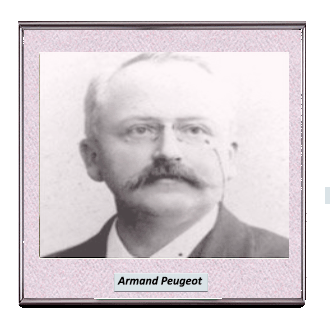 As was the tradition during these times, Armand began to work in the Peugeot conglomerate as a teenager, taking some time out to earn his engineering degree at the prestigious École Centrale Paris.
As was the tradition during these times, Armand began to work in the Peugeot conglomerate as a teenager, taking some time out to earn his engineering degree at the prestigious École Centrale Paris.
After graduating in 1881, Armand set off on a short fact-finding tour to the UK, and was instantly impressed with the new craze sweeping London, the bicycle, in particular, the “ Penny-farthing” variety.
Already 32 and an experienced businessman, Armand Peugeot saw that bringing the bicycle to France offered tremendous potential and a way to stamp his personality on the company, where he shared the joint management with several cousins.<
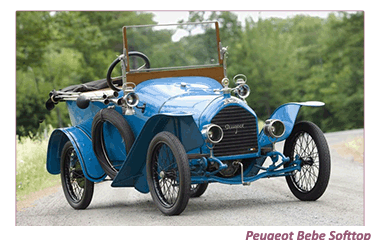 To his great personal satisfaction, Armand’s baby the "Le Grand Bi" penny-farthing introduced in 1882, proved to be the great commercial success he had hoped for, allowing him to develop a complete range of bicycles, all of which sold particularly well.
To his great personal satisfaction, Armand’s baby the "Le Grand Bi" penny-farthing introduced in 1882, proved to be the great commercial success he had hoped for, allowing him to develop a complete range of bicycles, all of which sold particularly well.
With his bicycle division established and profitable, Armand Peugeot began to turn his attention to the “ next best thing”- the automobile.
Not one to let the grass grow under his feet, Peugeot spent a few months researching this new industry, traveling to Germany to meet up with Europe’s leading auto industry pioneer, Gottlieb Daimler,as well as a few other key players.
![]()
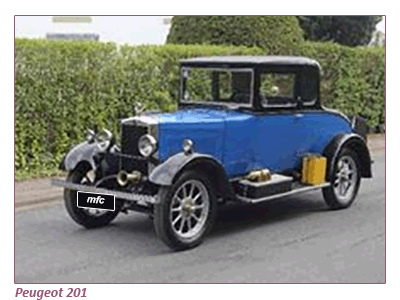 Armand’s goal was to build a plan on how to establish his foothold in the new and exciting world of the automobile.
Armand’s goal was to build a plan on how to establish his foothold in the new and exciting world of the automobile.
Despite the time spent with Daimler, the first Peugeot automobile was not petrol driven instead steam-powered car, the result of a short-term and ultimately ill-fated association with Léon Serpollet.
 Pioneer of the flash boiler, Serpollett, who was a firm believer that steam power could be generated that would be sufficient to drive an automobile, succeeded in convincing Peugeot to adopt his idea.
Pioneer of the flash boiler, Serpollett, who was a firm believer that steam power could be generated that would be sufficient to drive an automobile, succeeded in convincing Peugeot to adopt his idea.
Despite the high expectations, only four steam-powered Peugeots were ever produced. In 1889 Serpollett’s idea was abandoned with petrol-fuelled internal combustion engines becoming the first and only choice.
The following year the first petrol driven Peugeot was released, the engine produced by Panhard under license from Daimler.
![]()
 Over the next decade, Peugeot began to establish something of a market presence, increasing their sales tenfold over that period, from a modest thirty in 1892 to 300 in 1899.
Over the next decade, Peugeot began to establish something of a market presence, increasing their sales tenfold over that period, from a modest thirty in 1892 to 300 in 1899.
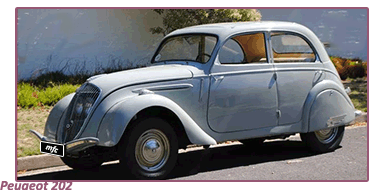 As the dawn of the Ninteenth century approached, with his car production division the rising star within the Les Fils de Peugeot Frères consortium, Armand Peugeot, possibly as a result of family friction, broke away to form his own company, Société Anonyme des Automobiles Peugeot.
As the dawn of the Ninteenth century approached, with his car production division the rising star within the Les Fils de Peugeot Frères consortium, Armand Peugeot, possibly as a result of family friction, broke away to form his own company, Société Anonyme des Automobiles Peugeot.
Now fully committed, that same year, Peugeot began to produce their own engines, making them no longer dependent on sub-contractors.
At the 1901 Paris Salon, Peugeot unveiled a 652 cc one-cylinder engined compact, known as the "Bébé."
The “Bebe” went on to become one of the best-selling models in the history,ran for more than thirteen years, with the Series Two 850 cc version, designed for Peugeot by none other than Ettore Bugatti even sold a few models on the other side of the English Channel.
It looked like nothing could arrest Peugeot’s remarkable growth, with the company commanding 40% of the total domestic market in France.
![]()
There were, however, dark clouds looming on the horizon, first, the instability in Europe that led to the outbreak of World War One, meaning that all forms of domestic car production would be suspended for the good of the war effort.
A second and possibly larger cloud over the auto giant was Armand Peugeot’s deteriorating health.
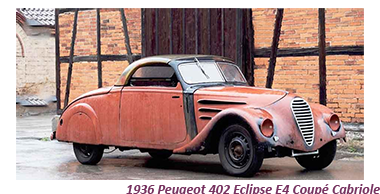 After a long and bitter struggle, Armand passed away early in 1915, but not before he had ensured the continuity of the company, passing ownership on to Peter, Robert and Julius, his second cousin Eugene Peugeot’s three sons.
After a long and bitter struggle, Armand passed away early in 1915, but not before he had ensured the continuity of the company, passing ownership on to Peter, Robert and Julius, his second cousin Eugene Peugeot’s three sons.
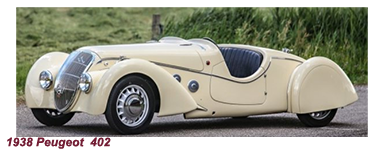 Armand had traditionally enjoyed a warmer relationship with Eugene than many of the members of his other family.
Armand had traditionally enjoyed a warmer relationship with Eugene than many of the members of his other family.
At the end of the war, Eugene in his three sons succeeded in getting the Peugeot plants back into action in rapid time.
With the “Bebe” now looking decidedly dated, the priority was the development of some new models as well as the spinning of the bicycle manufacturing division.
The fourth generation Peugeot brothers reportedly had developed a taste for the better things in life, as, during the early part of their watch, Peugeot seemed to be steadily moving upmarket, producing bigger and better cars, although considerably more expensive.
Thanks to post-war stability and the gradual rise in prosperity that it brought, the demand for Peugeot products increased steadily throughout the Twenties. Having the three brothers running the company was also taking its toll, especially when it came round to the decision-making process.
![]()
Peugeot's timing could not have been better, when as they introduced their first “ low cost” vehicle, the Great Depression began.
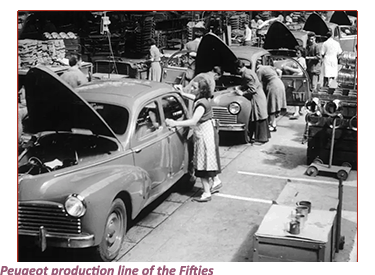 While Peugeot suffered as much as any other car manufacturer during this period, thanks to the 201 they held their own, because they could offer this well designed, technologically advanced and inexpensive car to a public that were counting their pennies, down to the last one.
While Peugeot suffered as much as any other car manufacturer during this period, thanks to the 201 they held their own, because they could offer this well designed, technologically advanced and inexpensive car to a public that were counting their pennies, down to the last one.
What the arrival of the 201 did for Peugeot, was to allow the company to define their brand image during the difficult years of the Thirties.
After its successful introduction, Peugeot began to produce three models geared towards three specific sectors- entry level ( the 200 series) mid-range ( the 300 series) and the middle to the top-end range ( the 400 series).
The three models that the company produced to meet the market demands of the Nineteen Thirties were the Peugeot 202, Peugeot 302 and the Peugeot 402. As far as eye appeal was concerned, the undisputed winner was the 402 BL Eclipse décapotable, which Peugeot claimed was the first convertible with a hydraulically retractable roof.
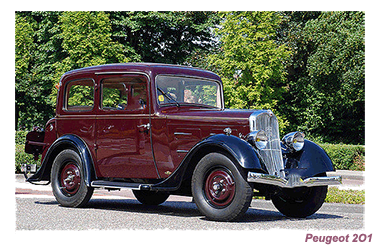 The 202 was Peugeot’s best seller of that period, an entry-level model that had replaced the 201 in 1938, remaining in production till 1942, when all domestic production was suspended during World War Two.
The 202 was Peugeot’s best seller of that period, an entry-level model that had replaced the 201 in 1938, remaining in production till 1942, when all domestic production was suspended during World War Two.
In 1945, at the end of all hostilities, Peugeot found themselves in a better position than most of their European contemporaries in the car manufacturing industry, with the factories reasonably intact and enough spare parts and raw materials to almost immediately resume production of the 202.
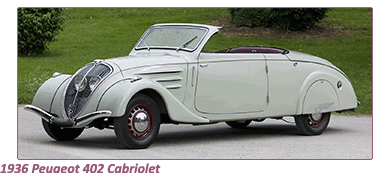 The company pressed their advantage as best they could by introducing the much more substantial but still utilitarian 403 in 1955. The 403 was a real workhorse available in a number of combinations from saloon to station wagon from convertible to pickup truck.
The company pressed their advantage as best they could by introducing the much more substantial but still utilitarian 403 in 1955. The 403 was a real workhorse available in a number of combinations from saloon to station wagon from convertible to pickup truck.
 The 403 remained in production till 1965, selling close to 1.2 million units, making for the first million-selling Peugeot.
The 403 remained in production till 1965, selling close to 1.2 million units, making for the first million-selling Peugeot.
The van and pickup combinations of the 403 even remained in production almost five years after the 404, its replacement, was released in 1960.
Peugeot survived the Fifties primarily with only two models in production, which made for a remarkable feat of corporate planning by anyone’s standards.
Take me back to the Home Page
EU6



